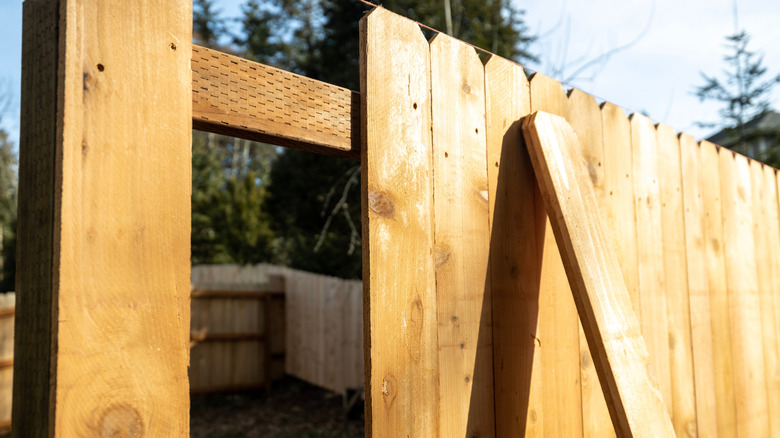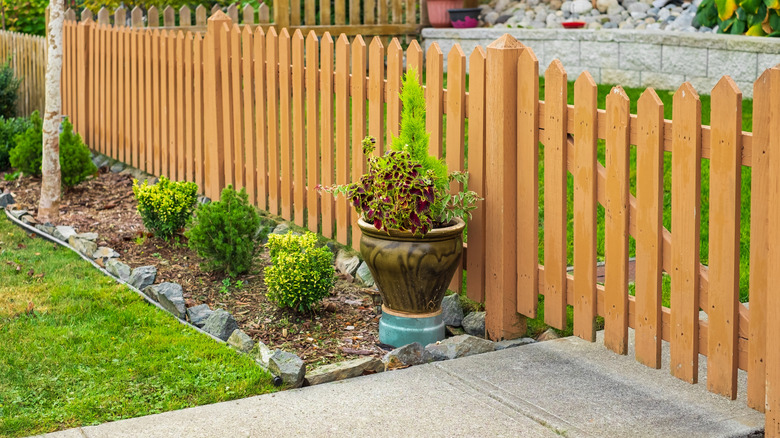Avoid Making This Crucial Mistake When Installing A Wooden Fence
A fence can be a key component in making your garden private and secure for your family and your pets. Many homeowners opt for the rustic, natural look of wooden fences, but if you do install one, make sure to avoid a common mistake. Don't put the fence panels directly on the ground.
Fence posts, of course, will touch the ground, but the fence panels should be at least several inches off the grass. Why? The ground contains moisture, bacteria, and bugs, all things that can contribute to wood rot and damage. Anyone who's had a wooden trellis in their garden fall prey to rot knows that this is a problem. A little bit of effort and strategy can help you learn how to repair rotted wood outside a trellis. But if you want to spend more time gardening, and less time honing your carpentry skills, make sure to keep a 2- to 5-inch gap between the fence panels and the ground.
If you're prone to flash flooding, several inches of space below the fence can also help water keep moving rather than pooling in your yard. Having a gap makes landscaping easier, too, with more room to edge at the bottom of the fence line. Plus, the ground won't be level, so the extra blank space beneath the fence will help your fence adapt to uneven spots. This little bit of give will ensure that the top line of the fence is even, even if your ground isn't.
Keep these fence tips in mind before you install
That extra space between the boards and the ground will help your fence look and function better. But exactly how much space do you need? The common wisdom is to keep 2 to 5 inches between the fence and the ground. Some cities require certain specifications when issuing permits for fencing, and homeowner associations also might have certain rules. If you live in a floodplain, you'll likely have even more restrictions. Always be sure to check with the city or homeowners association before you install the fence to avoid costly fixes or fines later.
If you don't have rules and regulations about fencing, then it's up to you to decide how much space to leave. One consideration is pets. The smaller the pet, the smaller you probably want that gap. If you do worry about a dog or cat escaping beneath your wooden fence, you could use decorative ways to keep the animals in. Learning how to attach a planter box to a fence can be an easy fix. You can also add a concrete footer as a barrier beneath the fence.
Of course, maybe you want to keep the small critters out, instead. You can learn how to prevent rabbits from digging under a garden fence by installing a chicken wire barrier. If you really don't want a gap below your fence, you could always look for non-wood options. A chain-length fence, for example, can sit directly on the ground.

